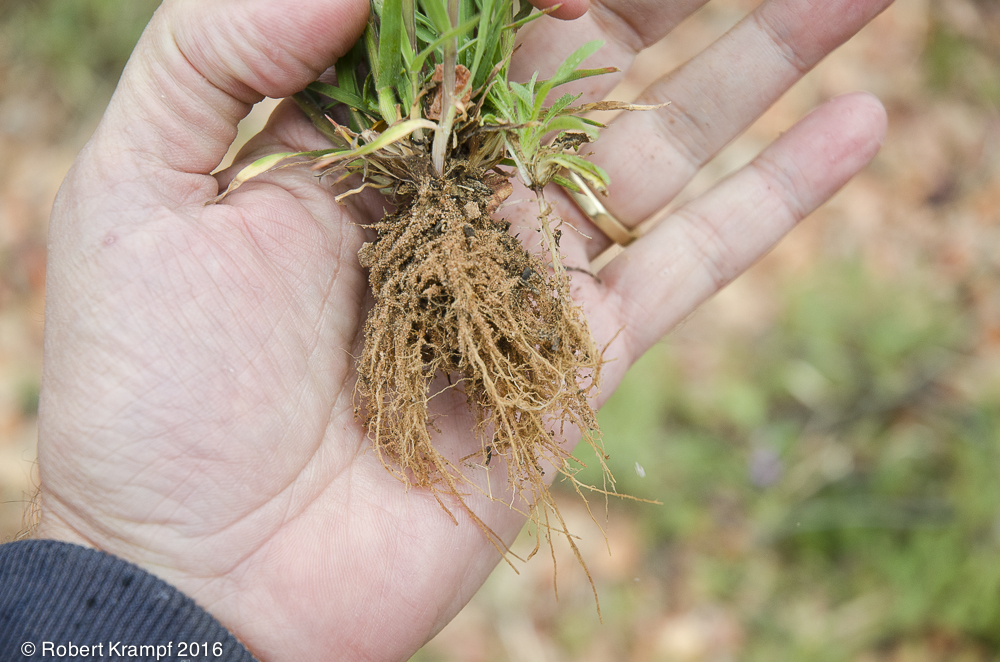
Which part of your body comes closest to serving the same function as a plant's roots?
-
Mouth
Yes! The main functions for most plant roots is to anchor it in place and to take in water and nutrients from the soil. We do not need anything to anchor us in one place, but we use our mouth to take in water and nutrients. -
Feet
No. A plants roots anchor into in place, keeping it from moving. Your feet do not do that. -
Lungs
No. A plant takes in air through its leaves, not through its roots. -
Skeleton
No. Your skeleton supports your body and protects your organs. In plants, this is done by the cell walls. The cell wall around each cell of a plant make it stiff, supporting stems, leaves, flowers, and other parts of the plant.
Click to see which state standards this question tests, and which of my videos, experiments, and other resources support that topic.
Florida
SC.3.L.14.1 Describe structures in plants and their roles in food production, support, water and nutrient transport, and reproduction.
| Heartless Plants | video, ClosedCaptions, checked |
| Pumpkin Guts | video, free, ClosedCaptions, checked |
| Measuring Photosynthesis | video, checked |
| Seed Search | video, ClosedCaptions, checked |
| Orange Slices | video, ClosedCaptions |
| Testing a Leaf for Starch | video, ClosedCaptions |
| Flowers | video, ClosedCaptions |
| Smell the Flowers | text page |
| Review Plants-3 | practice |
| Review Plants-2 | practice |
| Review Plants-5 | practice |
| Review Plants-6 | practice |
| Review Plants-7 | practice |
| Review Plants-8 | practice |
SC.4.L.16.1 Identify processes of sexual reproduction in flowering plants, including pollination, fertilization (seed production), seed dispersal, and germination.
| Flowers | video, ClosedCaptions |
| Pumpkin Guts | video, free, ClosedCaptions, checked |
| Seed Search | video, ClosedCaptions, checked |
| Orange Slices | video, ClosedCaptions |
| Review Plants-2 | practice |
| Review Plants-6 | practice |
| Review Plants-7 | practice |
| Review Plants-8 | practice |
| Review Plants-3 | practice |
SC.5.L.14.2 Compare and contrast the function of organs and other physical structures of plants and animals, including humans, for example: some animals have skeletons for support — some with internal skeletons others with exoskeletons — while some plants have stems for support.
| Bird Bones | video, free |
| Reading a Skeleton | video, free, checked |
| Orange Slices | video, ClosedCaptions |
| Thoughts on an Exoskeleton | text page, free |
| Review Plants-5 | practice |
| Review Plants-6 | practice |
| Review Plants-7 | practice |
Utah
UT.6.V.1.b Compare characteristics common in observed organisms (e.g., color, movement, appendages, shape) and infer their function (e.g., green color found in organisms that are producers, appendages help movement).
| A Walk in the Park | video, checked |
| Selective Smelling | video, checked |
| Onion Crystals | video |
| Thoughts on an Exoskeleton | text page, free |
| Review Adaptation-3 | practice |
| Review Adaptation-4 | practice |
| Review Plants-5 | practice |
| Review Plants-6 | practice |
| Review Adaptation-5 | practice |
| Review Plants-7 | practice |
| Review Adaptation-6 | practice |
UT.7.IV.2.d Relate the structure of organs to an organism’s ability to survive in a specific environment (e.g., hollow bird bones allow them to fly in air, hollow structure of hair insulates animals from hot or cold, dense root structure allows plants to grow in compact soil, fish fins aid fish in moving in water).
| Hunting with an Umbrella | video, free, ClosedCaptions, Updated |
| Bendable Bones | video, checked |
| Calling a Woodpecker | video, checked |
| Selective Smelling | video, checked |
| Seed Search | video, ClosedCaptions, checked |
| Orange Slices | video, ClosedCaptions |
| Flowers | video, ClosedCaptions |
| Onion Crystals | video |
| Thoughts on an Exoskeleton | text page, free |
| Review Plants-5 | practice |
| Review Plants-6 | practice |
| Review Plants-7 | practice |
NGSS
MS-LS1-1 Conduct an investigation to provide evidence that living things are made of cells; either one cell or many different numbers and types of cells.
| Microscopes: Making a Hay Infusion | video, free, learnalong, checked |
| Microscopes: Making a Wet Mount | video, learnalong, checked |
| Microscopes: Making a Dry Mount | video, learnalong, checked |
| 901 | photo challenge, free |
